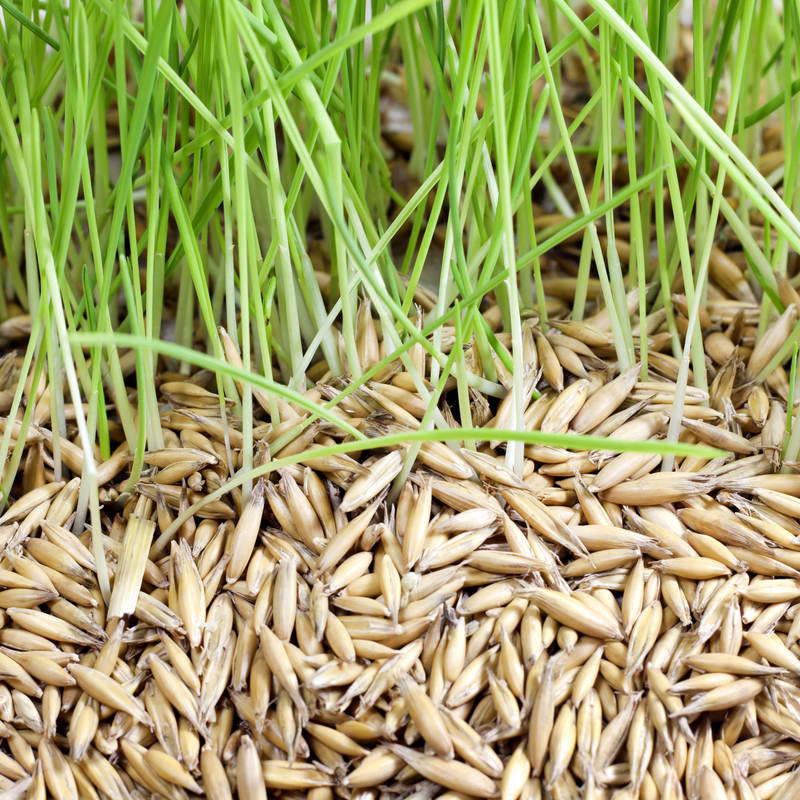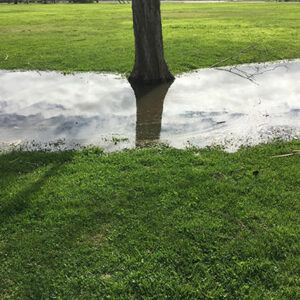Mowing Height for Healthy Lawns
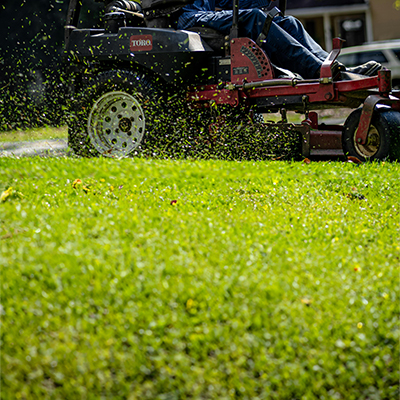 Lawn Mowing
Mowing your grass at the proper height helps the overall health and appearance of your lawn. When cutting your grass, Showcase Lawn Works recommends you never cut off more than one third of the grass blade at one time. When too much is cut off, stress to the plant occurs which causes thinning and yellowing of the grass - resulting in an undesirable appearance to your lawn. Showcase recommends a normal mowing height of 3 - 3.5 inches in the spring season. For summertime mowing, it is advantageous to cut your grass at an even higher height. Since there is less rain/water in the summer, keeping the grass at a slightly longer height helps shade the soil which will keep your lawn greener. To promote a thicker lawn with better weed suppression support, cut your grass at a higher height.
Lawn Mowing Strategy
Most importantly, keep mower blades sharp! When blades become dull, they do not cut precisely. Dull blades damage the grass by ripping it and this causes yellowing of the lawn after cutting. Mowing a lawn more than once a week might be necessary when the grass grows quickly. As a guideline, the goal is to not cut more than one third of the length of grass at one time.
Bagging or Not Bagging Clippings
Bagging clippings while mowing is not always required. A moderate amount of clippings is not unhealthy for your lawn. On the contrary, it can be beneficial to the soil by adding nitrogen back into it. However, large amounts of grass clippings that lay, on top of the lawn, in clumps or piles are unhealthy for the lawn underneath. Large amounts of cut grass laying on top of good grass can cause the healthy grass to die due to suffocation.
Mowing Results
After cutting your lawn at the proper height for a year, an improvement will be seen in its overall appearance. On the other hand, when a lawn is cut too short, the effects will be quite apparent in the dramatic decline in the health of the lawn. An unhealthy lawn will start to thin and take on an “off” color. In addition to that problem, bare patches will appear where grass has died. Other negative effects will include more weed breakthroughs along with common occurrences of disease/insect damage. Mowing your grass at the proper height with sharp blades will help your lawn stay healthy and have a great appearance.
We go above and beyond to make your property a Showcase.
Learn more about our services by visiting our website now. You can contact us online using our online form or give us a call at 717-354-3226.
For more informative articles regarding lawn care, tree and shrub care, landscaping, and pest control follow our blogs. And don’t forget to check us out and like us on Facebook.
Request A Quote
Lawn Mowing
Mowing your grass at the proper height helps the overall health and appearance of your lawn. When cutting your grass, Showcase Lawn Works recommends you never cut off more than one third of the grass blade at one time. When too much is cut off, stress to the plant occurs which causes thinning and yellowing of the grass - resulting in an undesirable appearance to your lawn. Showcase recommends a normal mowing height of 3 - 3.5 inches in the spring season. For summertime mowing, it is advantageous to cut your grass at an even higher height. Since there is less rain/water in the summer, keeping the grass at a slightly longer height helps shade the soil which will keep your lawn greener. To promote a thicker lawn with better weed suppression support, cut your grass at a higher height.
Lawn Mowing Strategy
Most importantly, keep mower blades sharp! When blades become dull, they do not cut precisely. Dull blades damage the grass by ripping it and this causes yellowing of the lawn after cutting. Mowing a lawn more than once a week might be necessary when the grass grows quickly. As a guideline, the goal is to not cut more than one third of the length of grass at one time.
Bagging or Not Bagging Clippings
Bagging clippings while mowing is not always required. A moderate amount of clippings is not unhealthy for your lawn. On the contrary, it can be beneficial to the soil by adding nitrogen back into it. However, large amounts of grass clippings that lay, on top of the lawn, in clumps or piles are unhealthy for the lawn underneath. Large amounts of cut grass laying on top of good grass can cause the healthy grass to die due to suffocation.
Mowing Results
After cutting your lawn at the proper height for a year, an improvement will be seen in its overall appearance. On the other hand, when a lawn is cut too short, the effects will be quite apparent in the dramatic decline in the health of the lawn. An unhealthy lawn will start to thin and take on an “off” color. In addition to that problem, bare patches will appear where grass has died. Other negative effects will include more weed breakthroughs along with common occurrences of disease/insect damage. Mowing your grass at the proper height with sharp blades will help your lawn stay healthy and have a great appearance.
We go above and beyond to make your property a Showcase.
Learn more about our services by visiting our website now. You can contact us online using our online form or give us a call at 717-354-3226.
For more informative articles regarding lawn care, tree and shrub care, landscaping, and pest control follow our blogs. And don’t forget to check us out and like us on Facebook.
Request A Quote
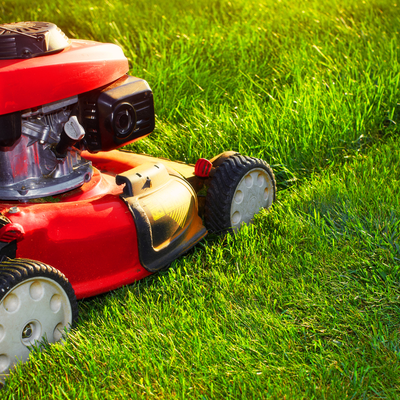
Weed Control - Rid Your Lawn of Nuisance Weeds and Plants
 Weed Control
Weeds come in various types such as: dandelions, clovers, thistles, broad leafs, crabgrass, nutsedge and violets. Weeds can interfere and compete with productive, healthy grass and cause an unsightly appearance - and in some cases destructive damage. These nuisance plants spar with grass for space, nutrients, water and light in your lawn. Request a free quote today.
Lawn Management
Keeping ahead of any weed growth is fundamental to having a healthy lawn and a weedfree property. Showcase Lawn Works has a proven approach to guaranteeing an end to your weed problems. Weed control treatments are applied on your lawn with every application of rounds two through five of our lawn care program. (Temperatures need to be above 50 degrees for weeds to be sprayed.) Some weeds are easier to eliminate than others. For example, dandelions and clovers are some of the easiest weeds to eradicate. On the other hand, thistles and crabgrass are more stubborn and are harder to stamp out. Another formidable foe is violets, which can take years to get rid of, because of the wax coating on their leaves. For the best outcome of ridding your lawn of violets, have them treated in the early spring or late in the fall. Even when treatments are being applied, weeds can be controlled but not necessarily completely eliminated due to the thousands of weed seeds underground. If you stop your lawn care treatment program, your lawn will revert back to the original form of wild weeds and grass.
Treatment
Because weeds germinate at different times throughout the summer, being consistent with your lawn care program treatments is essential. Weeds vary in their competitive abilities according to conditions and seasons. With thousands of weed seeds laying under the ground’s surface waiting for the right temperature, rain, and sun to germinate, it is paramount for treatments (rounds one through five) to be applied as scheduled. Although there are no preventive products available to prevent broadleaf weeds, weeds can be treated and killed when they are present. Showcase Lawn Works stands by its Weed Free Guarantee for full lawn care program customers. If you experience any weed problems, we will come out, in between our regularly scheduled visits, if necessary, to correct the issue, free of charge.
We go above and beyond to make your property a Showcase.
Learn more about our services by visiting our website now. You can contact us online using our online form or give us a call at 717-354-3226.
For more informative articles regarding lawn care, tree and shrub care, landscaping, and pest control follow our blogs. And don’t forget to check us out and like us on Facebook.
Request A Quote
Weed Control
Weeds come in various types such as: dandelions, clovers, thistles, broad leafs, crabgrass, nutsedge and violets. Weeds can interfere and compete with productive, healthy grass and cause an unsightly appearance - and in some cases destructive damage. These nuisance plants spar with grass for space, nutrients, water and light in your lawn. Request a free quote today.
Lawn Management
Keeping ahead of any weed growth is fundamental to having a healthy lawn and a weedfree property. Showcase Lawn Works has a proven approach to guaranteeing an end to your weed problems. Weed control treatments are applied on your lawn with every application of rounds two through five of our lawn care program. (Temperatures need to be above 50 degrees for weeds to be sprayed.) Some weeds are easier to eliminate than others. For example, dandelions and clovers are some of the easiest weeds to eradicate. On the other hand, thistles and crabgrass are more stubborn and are harder to stamp out. Another formidable foe is violets, which can take years to get rid of, because of the wax coating on their leaves. For the best outcome of ridding your lawn of violets, have them treated in the early spring or late in the fall. Even when treatments are being applied, weeds can be controlled but not necessarily completely eliminated due to the thousands of weed seeds underground. If you stop your lawn care treatment program, your lawn will revert back to the original form of wild weeds and grass.
Treatment
Because weeds germinate at different times throughout the summer, being consistent with your lawn care program treatments is essential. Weeds vary in their competitive abilities according to conditions and seasons. With thousands of weed seeds laying under the ground’s surface waiting for the right temperature, rain, and sun to germinate, it is paramount for treatments (rounds one through five) to be applied as scheduled. Although there are no preventive products available to prevent broadleaf weeds, weeds can be treated and killed when they are present. Showcase Lawn Works stands by its Weed Free Guarantee for full lawn care program customers. If you experience any weed problems, we will come out, in between our regularly scheduled visits, if necessary, to correct the issue, free of charge.
We go above and beyond to make your property a Showcase.
Learn more about our services by visiting our website now. You can contact us online using our online form or give us a call at 717-354-3226.
For more informative articles regarding lawn care, tree and shrub care, landscaping, and pest control follow our blogs. And don’t forget to check us out and like us on Facebook.
Request A Quote
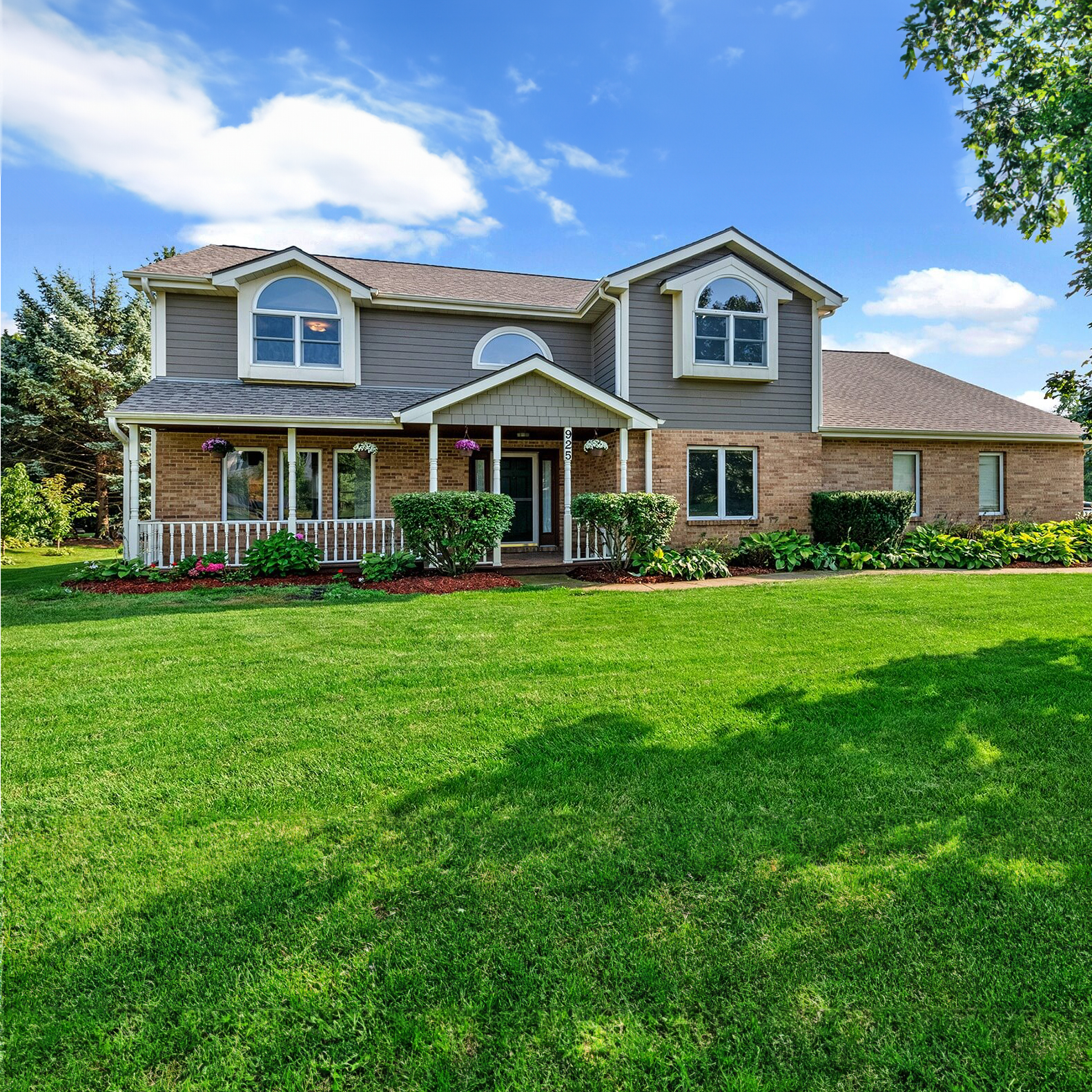
Soil Testing - Get a Healthy Lawn From the Ground Up
Soil Testing
Your soil needs to be able to provide nutrients to your lawn and plants. Having the right balance in your soil’s pH (level of acidity) will allow your grass and plants to flourish. Getting a soil test will offer valuable information on how to enhance your lawn, plants, and garden. (These tests can be performed on lawns, gardens, and farms.) A soil test reveals the levels of phosphorus, potassium, calcium, and magnesium. With this information in hand, a determination can be made if the soil needs lime and fertilizer or if it has too much. When the pH is too high, many nutrients may become less available. On the other hand, if your soil’s pH is too low, this deficiency can cause toxicity and harm the health of your lawn and plants. Request a free quote today. Test Process Soil testing can be done at any time of the year before fertilizer is put down (except when the ground is frozen). For a thorough, comprehensive soil test, several soil plugs (about the size of a thumb) are pulled for analysis. After the results are calculated, recommendations will be made for achieving the correct level for optimum grass and plant growth. Testing should be done every one to three years because soil can change with rain, snow, ice, and leaves - even too wet or too dry of conditions can alter the pH of your soil. Test Results Test results normally are back within four to five days. Showcase gets a copy of the report and a copy goes directly to the customer. After receiving the test results, Showcase follows up with a phone call to offer a full explanation along with recommendations for steps to be taken. With healthy soil, you are on the right path to have a successful lawn. The professionals at Showcase Lawn Works will collect your soil for testing, send it off for analysis, interpret the results, and make recommendations for how to help your lawn and property be its healthiest. We go above and beyond to make your property a Showcase. Learn more about our services by visiting our website now. You can contact us online using our online form or give us a call at 717-354-3226. For more informative articles regarding lawn care, tree and shrub care, landscaping, and pest control follow our blogs. And don’t forget to check us out and like us on Facebook.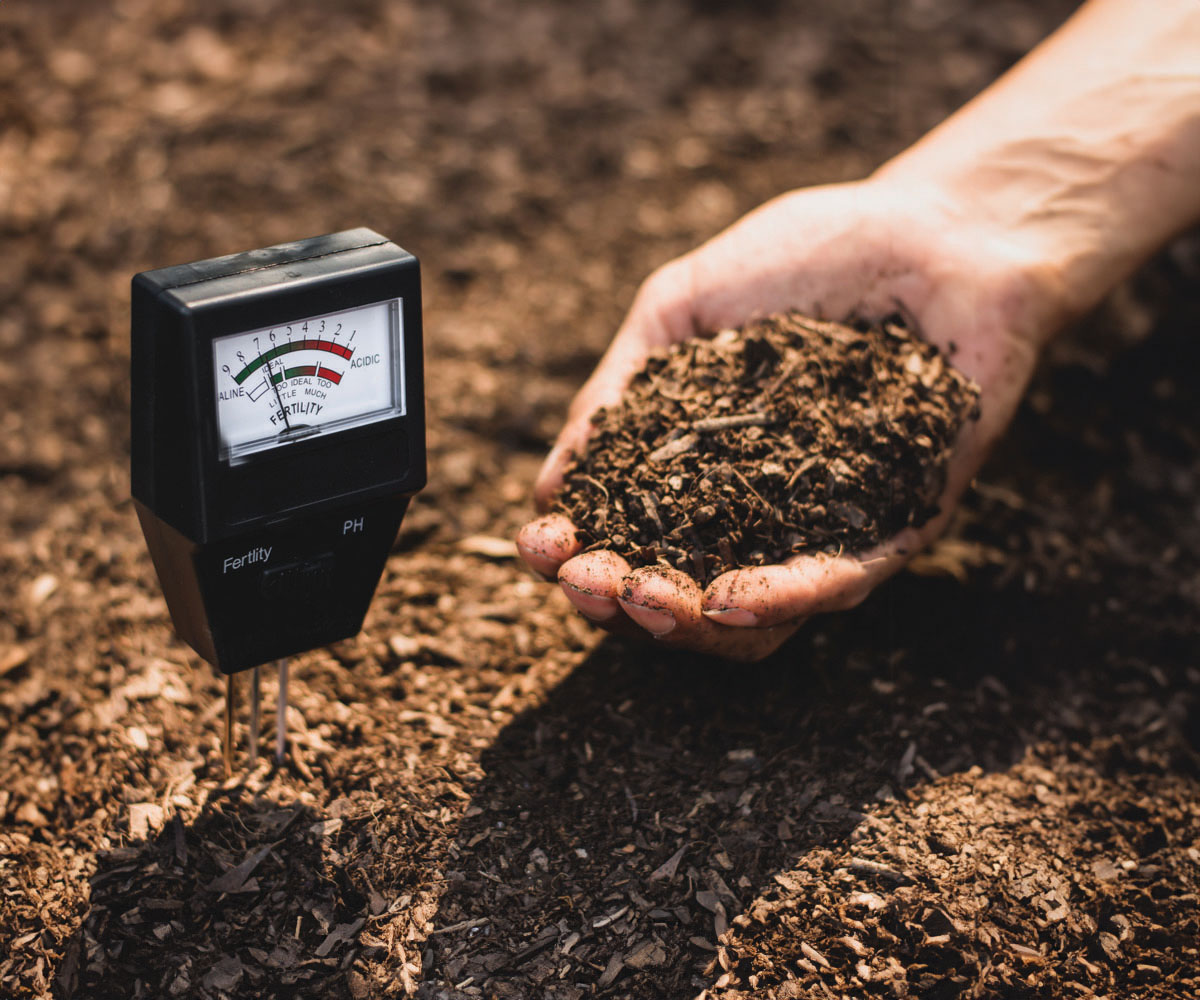 Request A Quote
Request A Quote
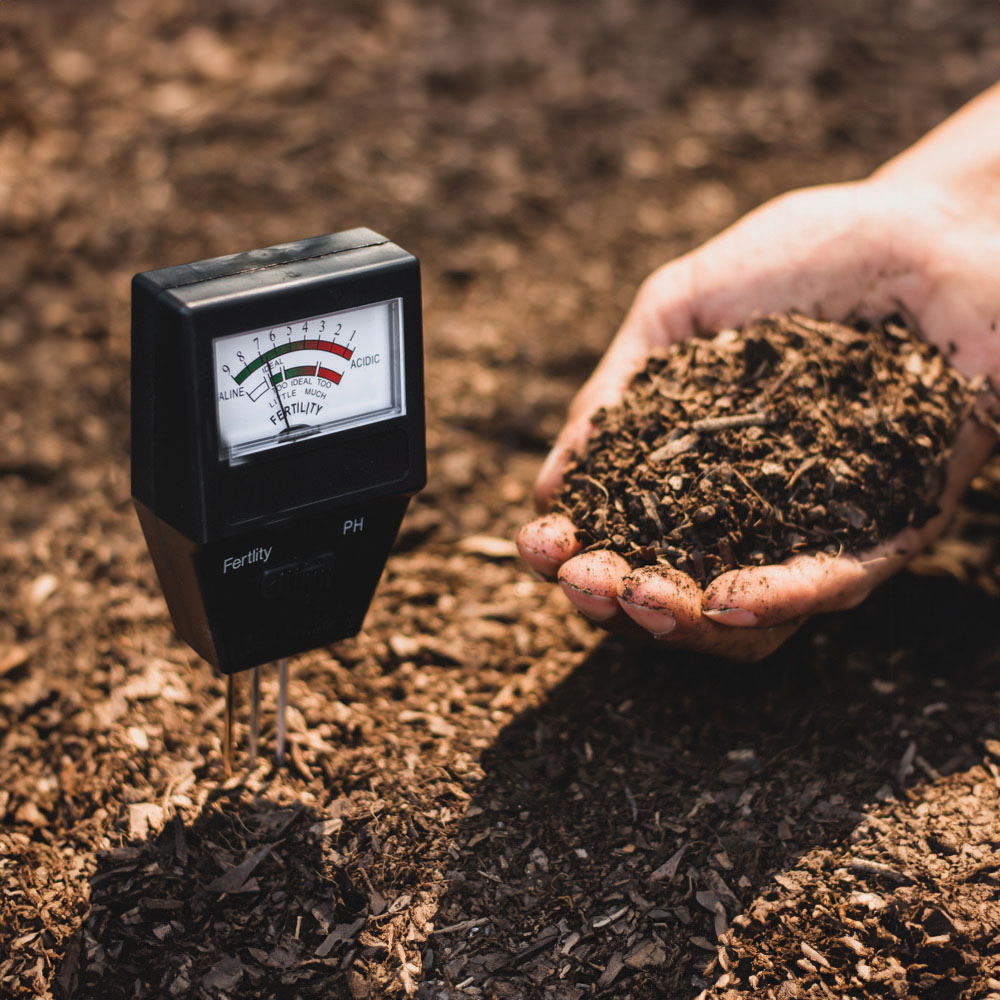
Showcase Lawn Works Team
Lawn Care Services
 Meet: Lynford Z., Supervisor, Certified Lawn Care Technician -
Having been in the industry since 1986, Lynford extensive lawn care experience is a great asset. He enjoys the people with whom he works and encountering something different every day on the job. Outside of work he enjoys hunting, going to his cabin, and long-range shooting.
Meet: Lynford Z., Supervisor, Certified Lawn Care Technician -
Having been in the industry since 1986, Lynford extensive lawn care experience is a great asset. He enjoys the people with whom he works and encountering something different every day on the job. Outside of work he enjoys hunting, going to his cabin, and long-range shooting.
 Meet: Jim H., Certified Lawn Care Technician -
Jim has been in the industry since 2012. As a people person, he enjoys getting to know his customers and helping them. His interests outside of work include: camping, hunting, fishing, playing poker, and bowling. In the past, Jim had served the community as an emergency responder, firefighter, and EMT for 30 years.
Meet: Jim H., Certified Lawn Care Technician -
Jim has been in the industry since 2012. As a people person, he enjoys getting to know his customers and helping them. His interests outside of work include: camping, hunting, fishing, playing poker, and bowling. In the past, Jim had served the community as an emergency responder, firefighter, and EMT for 30 years.
 Meet: Austin R., Certified Lawn Care Technician -
Austin’s been in the industry since 2017 doing both maintenance and lawn care. He loves being able to work outside and make things look good. One of his interests is to do art projects, which translates well into his taking pride in making customer’s yards look good. Austin enjoys participating in trading card games and has played competitively in the past.
Meet: Austin R., Certified Lawn Care Technician -
Austin’s been in the industry since 2017 doing both maintenance and lawn care. He loves being able to work outside and make things look good. One of his interests is to do art projects, which translates well into his taking pride in making customer’s yards look good. Austin enjoys participating in trading card games and has played competitively in the past.
 Meet: Shelby C., Certified Lawn Care Technician -
Being in the industry since 2019, Shelby enjoys her customers and always learning something new. Outside of work she enjoys family time with her husband and son, reading, and listening to music. For a start to the day, she believes in six impossible things before breakfast.
Meet: Shelby C., Certified Lawn Care Technician -
Being in the industry since 2019, Shelby enjoys her customers and always learning something new. Outside of work she enjoys family time with her husband and son, reading, and listening to music. For a start to the day, she believes in six impossible things before breakfast.
Tree & Shrub Services
 Meet: Phil B., Certified Tree & Shrub Technician -
Phil’s been in the industry since 2020 doing tree and shrub care and landscaping. At Showcase, he enjoys the people he works with every day. His interests outside of work include ¼ mile drag racing and dirt track racing with 410 sprint cars.
Request A Quote
Meet: Phil B., Certified Tree & Shrub Technician -
Phil’s been in the industry since 2020 doing tree and shrub care and landscaping. At Showcase, he enjoys the people he works with every day. His interests outside of work include ¼ mile drag racing and dirt track racing with 410 sprint cars.
Request A Quote
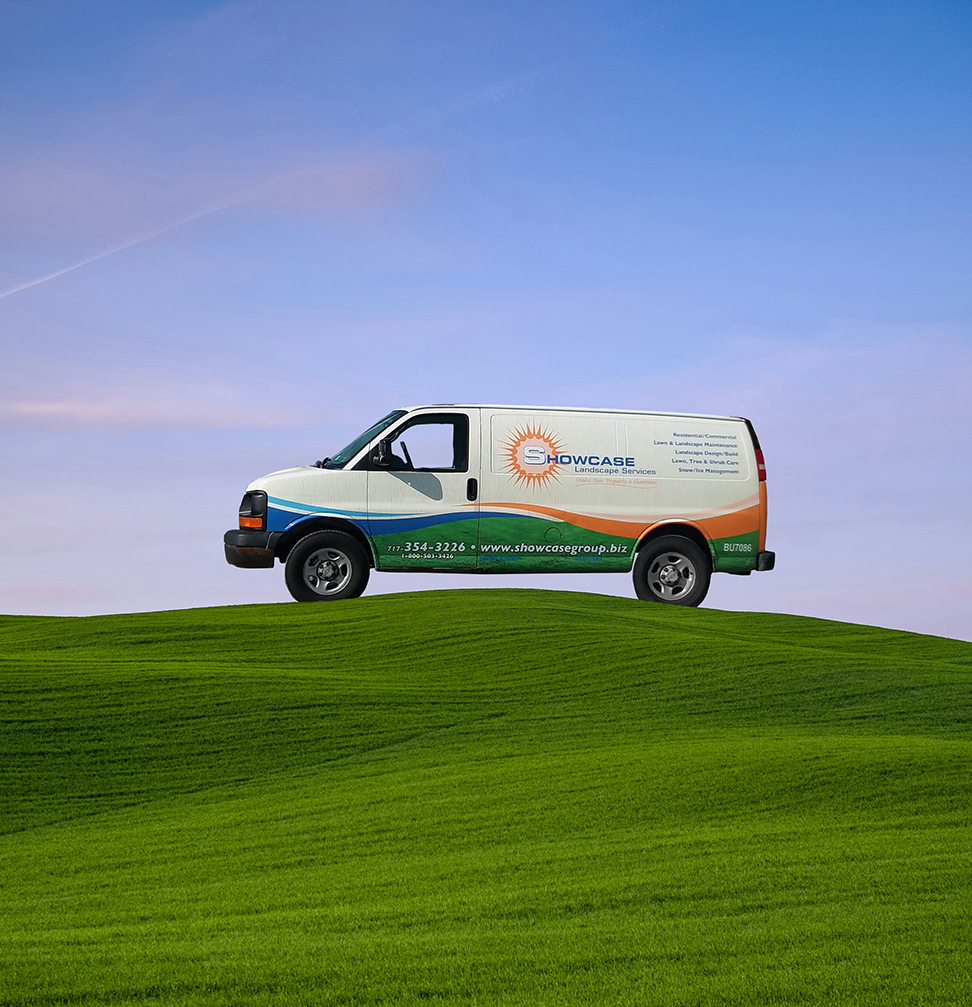
Fall Trimming and Yard Cleanup
Fall Trimming and Yard Cleanup make a big difference when preparing your property for the winter. A good fall cleanup is beneficial for a more productive growing season next year as well as a healthier, green lawn. Request a free quote today. Fall Trimming and Pruning Take advantage of the window of time between now and winter to have Showcase Landscape Services prune your trees and shrubs. Trimming off the diseased, decayed, rotted, or damaged wood and branches in the fall enhances your property’s appearance. In addition, removing dead branches and peeling wood helps maintain the structure, health, and safety of trees and shrubs. It is especially important to take care of dead limbs on trees before the bad weather arrives with heavy snow and ice. Fall Cleanup Let Showcase Landscape Services take care of cleaning up the leaves from your landscape beds and/or lawns. Removing the heavy layer of leaves in the fall promotes new growth in the spring. Compacted leaves on the lawn are an easy way for snow mold diseases to grow and damage grass. We’ll blow leaves and debris from landscape beds and lawns and remove them from your property. With the final cut of the lawn for the season, your lawn is ready for the winter. Learn more about our services by visiting our website now. You can contact us online using our online form or give us a call at 717-354-3226. For more informative articles regarding lawn care, tree and shrub care, landscaping, and pest control follow our blogs. And don’t forget to check us out and like us on Facebook.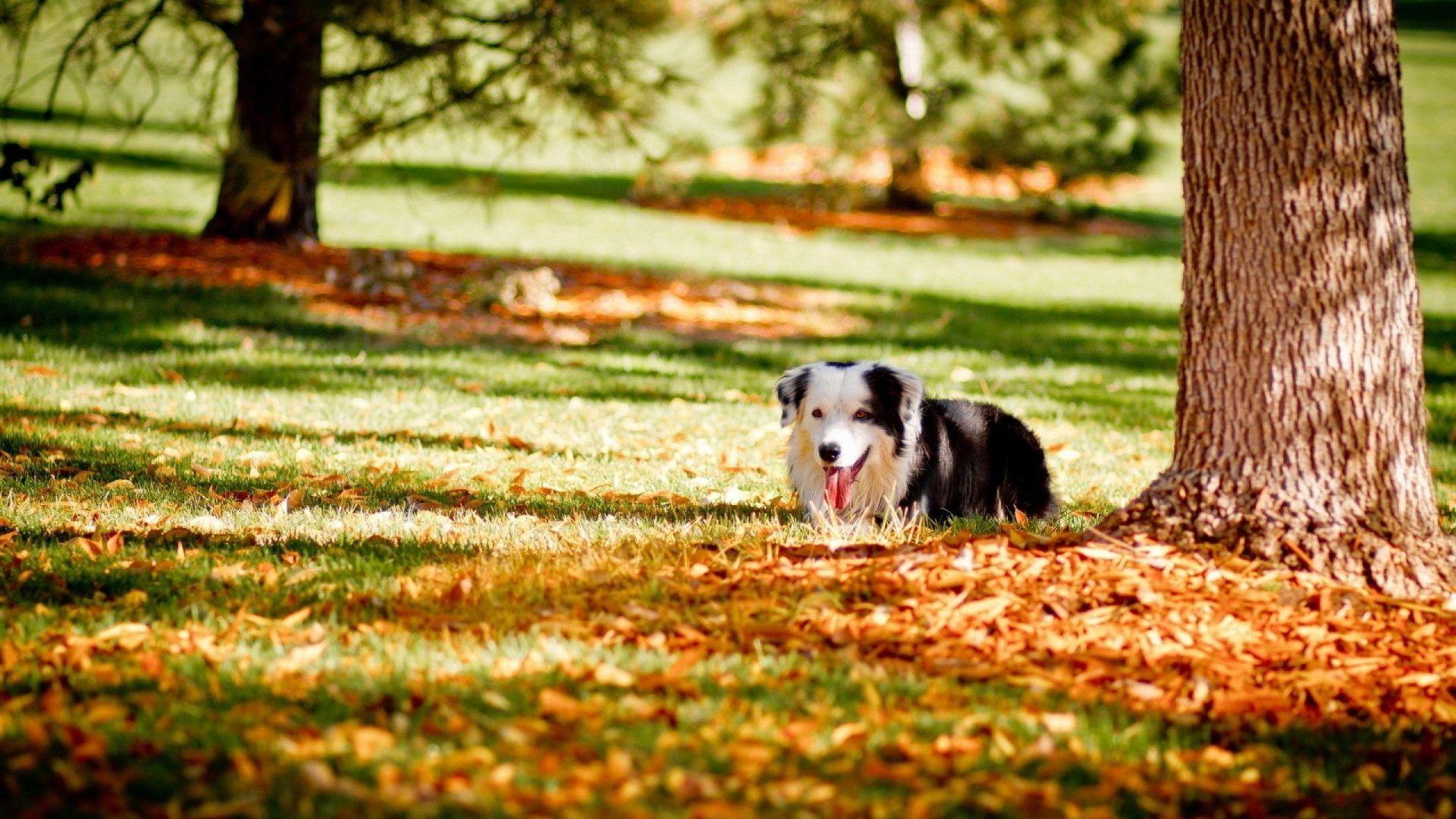 Posted 10/24/2023
Request A Quote
Posted 10/24/2023
Request A Quote
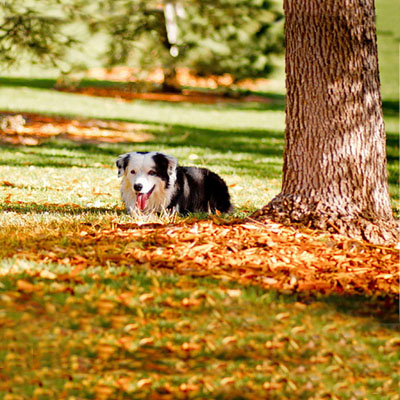
What Is Destroying the Lancaster Area's Ash Trees?
One of the most essential beings on our planet, they provide shade, sound-proofing, filter air pollution, create privacy, increase our home value and produce oxygen. The trees on your Lancaster area property are a vital component of your landscape, but like grass, they too can suffer from various diseases and attacks by pesky insects. One such critter is an invasive beetle destroying the Pennsylvania ash tree at an alarming rate. What is this menacing creature, and how can you prevent it from wreaking havoc on your ash trees?What is Emerald Ash Borer?
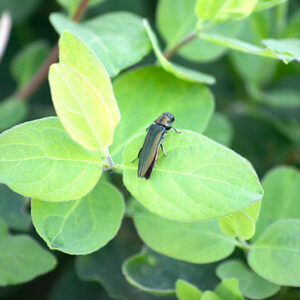 The Emerald ash borer beetle (EAB) is a tiny wood-boring beetle covered in metallic green. Only 1/2 of an inch long and 1/8 of an inch wide, it was first discovered in the Detroit area in 2002 and thought to have been brought over from Asia. It was first discovered in PA in 2002. As their name suggests, the emerald ash borer beetle feeds exclusively on ash trees. While the adults are not harmful, the young larvae feed on the bark of the ash tree and involuntarily chew through the tree's water and nutrient-carrying tissues. Doing so prohibits the spread of water and vital nutrients throughout the rest of the tree. If there is enough of an infestation, the rest of the tree will suffer, and within three to five years, the tree will die.
The Emerald ash borer beetle (EAB) is a tiny wood-boring beetle covered in metallic green. Only 1/2 of an inch long and 1/8 of an inch wide, it was first discovered in the Detroit area in 2002 and thought to have been brought over from Asia. It was first discovered in PA in 2002. As their name suggests, the emerald ash borer beetle feeds exclusively on ash trees. While the adults are not harmful, the young larvae feed on the bark of the ash tree and involuntarily chew through the tree's water and nutrient-carrying tissues. Doing so prohibits the spread of water and vital nutrients throughout the rest of the tree. If there is enough of an infestation, the rest of the tree will suffer, and within three to five years, the tree will die.
Why Is This Such a Problem?
The emerald ash tree is a beautiful, statuesque deciduous tree. Providing us with a colorful palette in the fall, it is a valuable resource used to make various tools, handles, baseball, softball bats, and boat bows. Ash trees provide shelter for a variety of butterflies, moths, and birds, including wood duck, pine grosbeak, purple finch, bobwhite, and fox squirrels. With EAB already destroying hundreds of ash trees in North America, it has already cost municipalities, nurseries, property owners, and the forest industry hundreds of millions of dollars. If you're a home or business owner in the Lancaster area, there are specific symptoms and signs you can look for.Signs and Symptoms of Emerald Ash Borer
Canopy Thinning and Crown Dieback Because the young larvae feed beneath the bark, one of the first symptoms that appear is dead and thinned-out branches. Keep in mind this can be a symptom of other diseases as well so it's important to look for other symptoms. D-Shape Exit Holes Another symptom of EAB is the presence of D-shaped holes in the bark. When trees are stressed, they may try to grow new branches and leaves wherever possible. Stressed ash trees may have new growth at the base of the trunk or on the main branches. S-Shaped Galleries & Splitting Bark - Trees attacked by EAB have distinct S-shaped or tunnels beneath the bark. They are approximately 1/8 inch wide and packed with a mixture of sawdust and insect excrement. Epicormic Sprouting As EAB larvae feed, trees attempt to create callus tissue around larval galleries, which cause the bark to split vertically. Woodpecker Sightings Woodpeckers tend to feed on the larvae and pupa of infected ash trees, so if there is an unusual amount of woodpecker activity around your trees, this may be a cause for concern.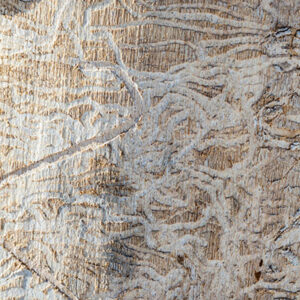
Is There Anything I Can Do To Protect The Ash Trees on My Lancaster Property?
- Know the signs of an EAB infestation and watch all ash trees on your property
- Only buy and burn local firewood
- Do not move firewood
Provide Your Trees With the Best Care Through Showcase Lawn Works Tree and Shrub Care Service
The healthier and more robust the tree, the less susceptible they are to diseases and insect infestations such as the emerald ash borer beetle. Therefore, your first and best line of defense against any tree disease or pest is to invest in a highly effective tree and shrub care program such as the one the professionals at Showcase Lawn Works provide. Our tree and shrub care program offers six different visits spaced out accordingly. Not only do we feed your trees and shrubs with the fertilizer needed to stay healthy, but we also inspect and treat diseases. We continue to check for insects and conditions throughout the season; therefore, with our tree and shrub care program by your side, you will never have to worry about whether or not your ash trees are infected. Learn more about our tree and shrub care program by visiting our website now. You can contact us online using our online form or give us a call at 717-354-3226. For more informative articles regarding lawn care, tree and shrub care, landscaping, and pest control follow our monthly blog. And don't forget to check us out and like us on Facebook. Request A Quote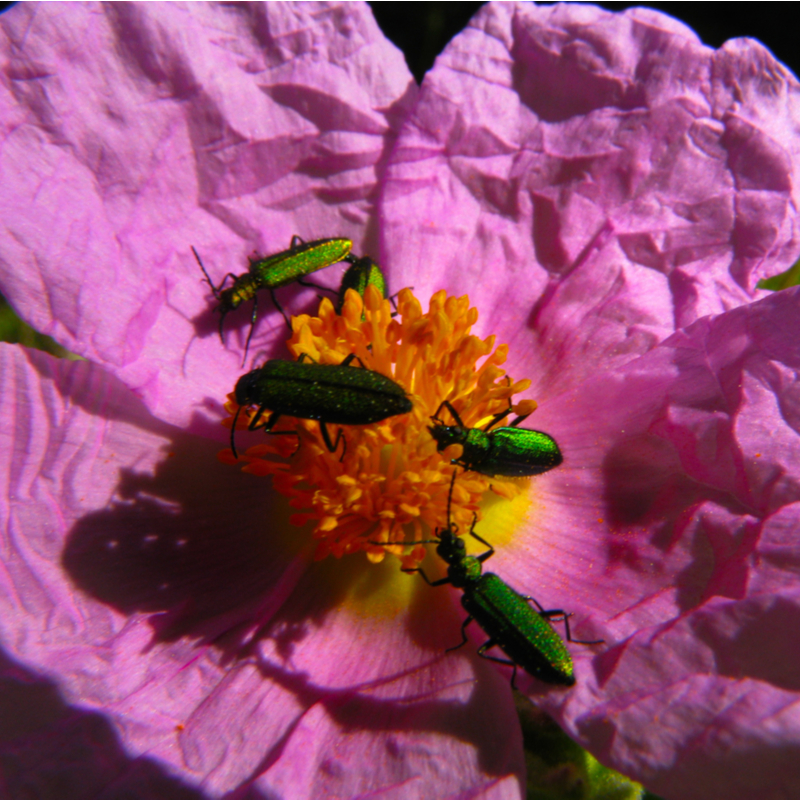
Bring Nature Inside Your PA Home With Winter Bird Watching
Winter in Eastern PA can be a real doozy. Cold temperatures, short days followed by windy nights, and frost-covered mornings make it feel like spring is a long time away. The last thing on your mind is getting back outside, taking care of your lawn, or spending time with nature. But as we wait for the ice to thaw and the snow to melt, we can enjoy the sights and sounds of nature right in the comforts of our own home by taking part in winter bird watching. Yes, it is true. Many birds fly south for the winter. But we do have feathered friends who spend all four seasons here. We are also visited by birds who breed north of us and spend their winters in PA. In Pennsylvania, there are approximately 35 species that can be observed through the winter months. There are things you can do alone or as a family to help attract these beloved creatures to your backyard. In doing so, you will also help them survive the harsh elements. Below is a list of the more common bird species you might find stopping for a visit.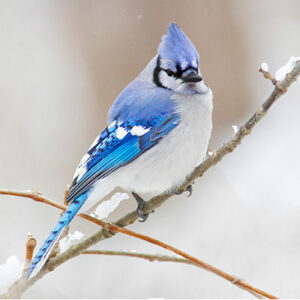
- Black-capped Chickadees
- Tufted Titmouse
- Northern Cardinal
- Downey Woodpecker
- Red-bellied Woodpecker
- House Finch
- American Goldfinch
- White-breasted Nuthatch
- American Crow
- Blue Jay
- American Tree Sparrow
- Dark-eyed Junco
- Mourning Dove
Want To Attract Birds to Your Eastern PA Property? Put Out Food!
So how do you go about attracting winter birds to your Eastern PA backyard? First, most birds are lured by food. Put up one or several birdfeeders offering a variety of different seeds. Use feeders that have covers to protect your seeds from snow and rain. Place feeders in areas hidden by trees and shrubs where birds are sheltered from severe winds and predatory birds. When choosing the type of food to fill your feeders, try to pick foods high in fat and oil. This is because the typical protein sources such as insects and berries are scarce this time of year. Food that contains lots of fat and oils include:- Black oil sunflower seeds. Sunflower seeds are eaten by over 40 species of birds, including chickadees, cardinals, blue jays, and sparrows.
- White millet seed
- A suet mix that includes both seeds and fruit
- Peanuts or peanut butter
- Thistle seed
Birds Need Fresh Water
In Eastern PA, many of our lakes, creeks, and stagnant water sources freeze in the winter. Having fresh water in your backyard will make it a haven for the birds in winter. Heaters or agitators can be used to prevent the water from freezing.Help Protect Them From the Elements
If you're cold, imagine what it must feel like to something the size of a bird. You can help them by placing birdhouses and roosting boxes on your property. Roosting boxes are like hotels for birds and offer several perches inside for them to congregate. Unlike birdhouses intended for building nests, a roosting box provides shelter from cold temperatures, predators, and extreme weather elements. Place roosting boxes in a sheltered area protected from the wind. Try to place it in a south-facing location that gets sunlight during the day.Plant Native Trees and Shrubs
By planting specific trees and shrubs native to Eastern Pennsylvania, you can help create the appropriate environment for birds. There is a variety of vegetation that offers good sources of shelter and food to birds. But when looking for native plants, don't buy them from a nursery unless it has the correct Latin name attached to them. Many trees and shrubs come in native and non-native types. Non-native plants do not support the variety and abundance of insects our birds need to survive. Some of the most popular native trees and shrubs include: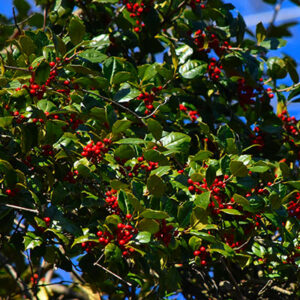
- Serviceberry Amelanchier
- Spicebush Lindera benzoin
- American Beautyberry Callicarpa americana
- Pin Cherry Prunus pennsylvanica
- Dogwood Cornus
- American Holly Ilex opaca
- Winterberry holly Ilex verticillata
- American beech Fagus grandifolia
- White Pine Pinus strobus
- American Cranberrybush Viburnum trilobum
- Juniper Juniperus virginiana
- Elderberry Sambucus Canadensis
- Blueberry Vaccinium corymbosum
Other Bird Watching Environments
If you are interested in further your winter bird watching outside of your home, there are plenty of places here in Eastern PA to watch winter birds. Take the kids, grab the binoculars and camera and make it a family outdoor experience. Brushy fields or shrubs and tall grasses are always a good starting point. Other bird watching environments include:- Open water and streams
- Thickets of trees
- Brush piles
- Fields that contain wild berries
For All Your Lawn Care and Landscaping Needs, Call the Professionals at Showcase Lawn Works
Spring may feel a long way off but it's never too early to look ahead when it comes to lawn care and landscaping. Schedule your upcoming spring lawn care with Showcase Lawn Works now. As a locally-owned business here in Eastern PA, we want to help you turn your landscape into what you’ve always imagined it could be, a showcase yard. To achieve this, we offer a lawn care program to help protect and maintain your lawn, a tree and shrub care program, and various landscaping services, including landscaping design. Check out all of our services by visiting our website, contacting us online, or giving us a call at 717-354-3226. Did you like the article above? Then feel free to share it with family and friends. Visit our blog page for other monthly informative articles and while you're at it, check us out on Facebook and like us there! Request A Quote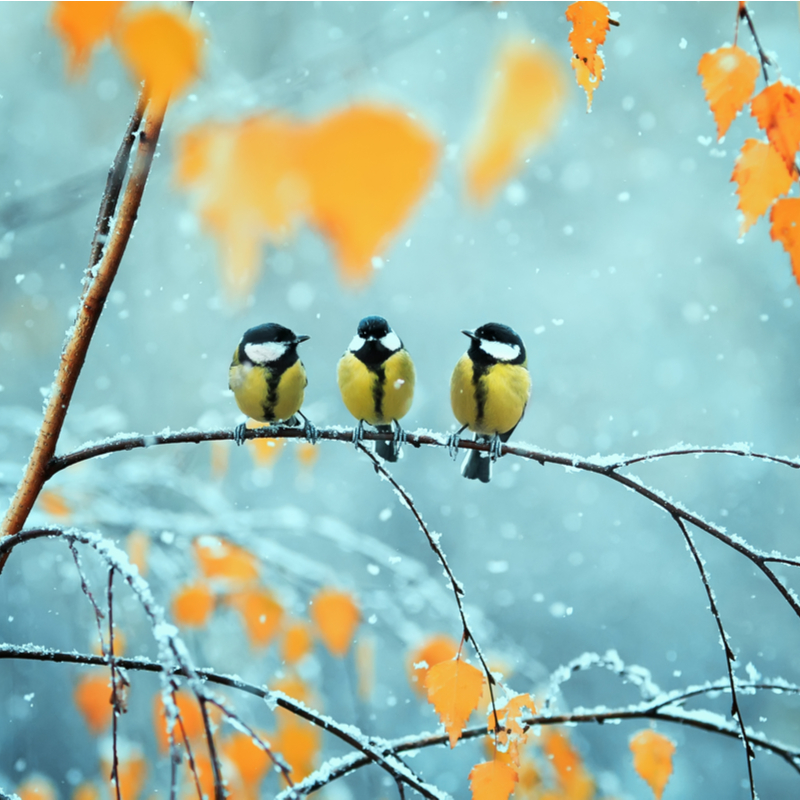
Winter Burn: How To Identify, Prevent, and Treat It
Winter burn is a common issue that can affect various species of evergreen trees and shrubs in Eastern Pennsylvania. If you have pine or spruce trees in your yard, or plants like rhododendrons, holly bushes, or junipers in your garden, you should be aware of this problem, how you can identify it in your plants, how it can be prevented, and how winter burn can be treated. If not controlled and treated, winter burn can lead to serious injury or even death of the plant. To make sure this issue doesn’t cause long-term damage to your plants, call the professionals at Showcase LawnWorks.What Causes Winter Burn
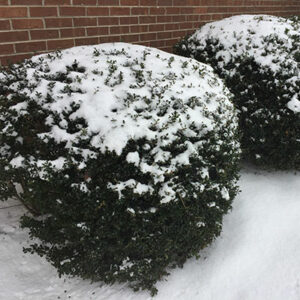 As the name suggests, winter burn is caused by the cold temperatures during the winter season. These cold temperatures, particularly when the ground freezes, can prohibit a plant from taking up much-needed water and nutrients from the ground to replace the water it has lost through transpiration and sustain itself in the dry, cold conditions that winter brings to Pennsylvania. This creates a big problem for a plant with a shallow root system or one that is not healthy and well-developed. Warmer temperatures in the fall can also cause a plant to delay its transition into winter dormancy, leading to severe damage to a plant’s foliage when temperatures drop quickly as the seasons change. Another factor that can cause winter burn are plants warming up during a sunny day followed by drastic temperature changes at night as the sun goes down.
As the name suggests, winter burn is caused by the cold temperatures during the winter season. These cold temperatures, particularly when the ground freezes, can prohibit a plant from taking up much-needed water and nutrients from the ground to replace the water it has lost through transpiration and sustain itself in the dry, cold conditions that winter brings to Pennsylvania. This creates a big problem for a plant with a shallow root system or one that is not healthy and well-developed. Warmer temperatures in the fall can also cause a plant to delay its transition into winter dormancy, leading to severe damage to a plant’s foliage when temperatures drop quickly as the seasons change. Another factor that can cause winter burn are plants warming up during a sunny day followed by drastic temperature changes at night as the sun goes down.
Recognizing Winter Burn In Your Eastern PA Trees and Shrubs
When plants can’t take in water from the ground to replace the water they have lost through transpiration, this causes them to become dehydrated. This winter burn dehydration is easily identified by the browning of foliage near the tips of branches that eventually spread down the branch toward the center of the plant. For broad-leaf evergreen plants like boxwood trees, holly bushes, and rhododendrons, browning will occur on the edges of leaves first and then spread to cover the entire leaf. This browning will typically show up on the southern and western sides of plants, and browned foliage will start to fall off the plant in the spring and summer.How You Can Prevent Winter Burn
If you want to keep your plants from getting winter burn this year and in future seasons, there are a few important steps you should take:- Know before you plant: Make sure any plants you add to your yard will be cold-hardy enough for the winter season or will be in a location that will offer protection from cold temperatures and icy blasts. Also, only plant evergreen species in the spring, summer, and early fall so that any new plants will have time to develop a healthy root system before the cold sets in.
- Protect plants from the elements: Consider creating barriers from materials like canvas or burlap about two feet away from evergreen species to help provide shade and block cold winds.
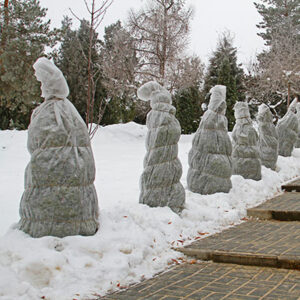
- Add plenty of mulch: Mulch around the base of evergreen trees and shrubs will help to insulate a plant’s root system and allow the plant to continue taking up water and vital nutrients from the soil despite extremely cold temperatures. However, don’t put mulch too close to the trunks of plants, as this can lead to problems with rot and disease.
- Prune and fertilize at the right time: You shouldn’t prune evergreen trees or shrubs after late summer, as this can prompt the plant to produce new growth that won’t be winter-hardy, making the plant very susceptible to damage from winter burn. Likewise, avoid fertilizing evergreen plants after late summer to help prompt them to enter the winter dormancy stage.
- Make sure plants have plenty of water: To help with dehydration problems in the winter, it's important to ensure you are watering your evergreens properly during the growing season.
The Best Way to Treat Winter Burn
The best way to treat a plant suffering from winter burn is with a winter burn treatment like the one offered by Showcase LawnWorks, which can help minimize the extent of the damage caused by this seasonal problem. Branches and sections of plants affected by winter burn should be removed in mid-spring after the plant has produced new growth. Evergreens that were severely damaged by winter burn will probably need a little extra fertilizer and water during the growing season to get them back in health, so a dependable tree and shrub care program is also a great idea.If You Have Evergreen Trees Or Shrubs In Your Yard, Call Showcase LawnWorks
Winter burn can cause serious damage or even death to evergreen trees and shrubs in Pennsylvania, so it's important to make sure they are well-prepared for the winter ahead and that any damage that does occur is limited. The experts at Showcase LawnWorks offer a winter burn treatment that can help save your plants, as well as a comprehensive tree and shrub care program that will keep them healthy and ready to face whatever nature throws at them. Visit our website to see more information on our tree and shrub care program and all of our other lawn care, perimeter pest control, and landscaping services. Fill out our contact form or give us a call at 717-354-3226. And don't forget to keep reading our monthly blog for more helpful articles on caring for your plants and yard! Are you on Facebook? We are too. Check out our Facebook page and like us. Request A Quote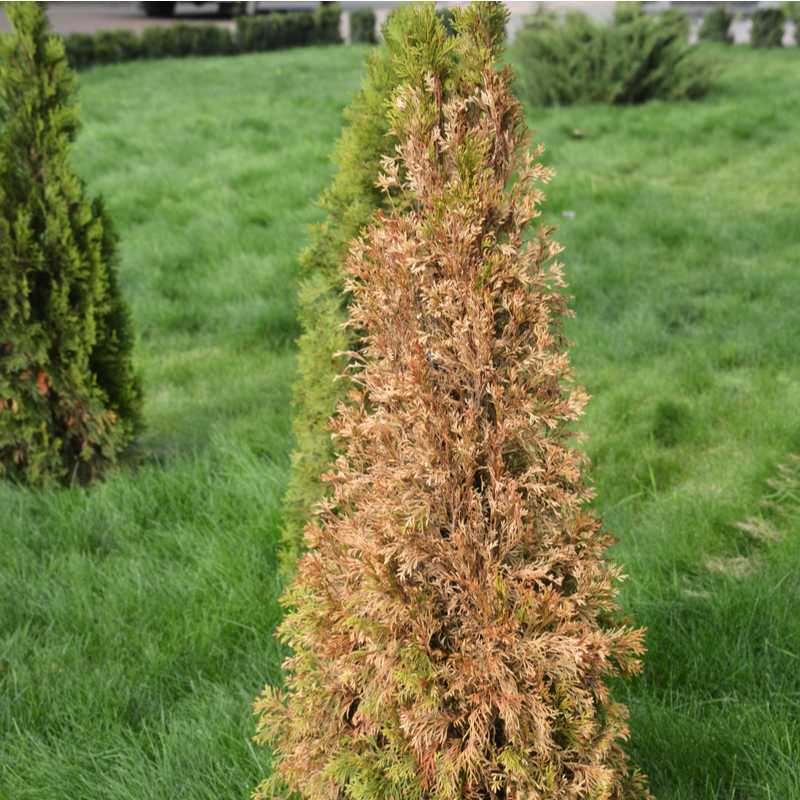
Why You Should Hire A Professional for Snow Removal
While snow can be fun to look at and play in, heavy snowfall can also make it difficult to get out of the house. Even though fall is just getting started, it’s almost that time of year again in Pennsylvania to break out the snow shovels, snowblower, cold-weather gear, and ice melt. With harsh winter weather on the way, now is the time to make a plan for removing snow and ice cover from your driveway and sidewalks so that you can still get out and about no matter what the weather brings. You might think that hiring a professional for this everyday chore is a waste of money, but it could actually save your life or the life of your loved ones. Removing snow can be extremely taxing work even for an experienced snow shoveller, and as a result, this chore can be hazardous for your health. Not to mention, snow shoveling can be time-consuming and very inconvenient depending on where you live and your schedule. Weighing all the risks and costs of doing it yourself, it’s best to hire a professional to make sure the snow on your property is removed safely and effectively.Health Risks of Shoveling Snow Yourself
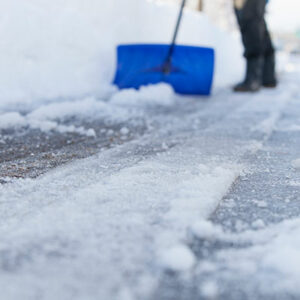 Even if you are in good shape, shoveling snow can be dangerous for your health. For those with heart conditions or people over 55, this chore can even be deadly. Moving heavy, wet snow around is an extremely strenuous activity comparable to the peak of a fast-paced cardio workout. The motion vigorously works your arms, legs, back, and especially your heart and lungs. As a result, shoveling snow puts a lot of strain on your heart. Coupled with the cold temperatures that constrict your blood vessels and increase your blood pressure, as well as the more sedentary lifestyle that winter weather typically brings, this exertion can easily trigger a heart attack. In the US alone, more than 100 people die every year while shoveling snow and studies show that as snowfall increases, so does the hospital admittance rate for heart attacks.
Although snow blowers might seem like a better option than shoveling the snow, lugging a heavy machine around your driveway and sidewalks can pose many of the same health risks as removing the snow manually. In addition to the risk of a heart attack, other common health hazards include muscle strains and injuries from slipping and falling on slick ice or snow. Improper lifting techniques also frequently lead to back injuries and pain.
Even if you are in good shape, shoveling snow can be dangerous for your health. For those with heart conditions or people over 55, this chore can even be deadly. Moving heavy, wet snow around is an extremely strenuous activity comparable to the peak of a fast-paced cardio workout. The motion vigorously works your arms, legs, back, and especially your heart and lungs. As a result, shoveling snow puts a lot of strain on your heart. Coupled with the cold temperatures that constrict your blood vessels and increase your blood pressure, as well as the more sedentary lifestyle that winter weather typically brings, this exertion can easily trigger a heart attack. In the US alone, more than 100 people die every year while shoveling snow and studies show that as snowfall increases, so does the hospital admittance rate for heart attacks.
Although snow blowers might seem like a better option than shoveling the snow, lugging a heavy machine around your driveway and sidewalks can pose many of the same health risks as removing the snow manually. In addition to the risk of a heart attack, other common health hazards include muscle strains and injuries from slipping and falling on slick ice or snow. Improper lifting techniques also frequently lead to back injuries and pain.
Other Benefits Of Hiring A Professional
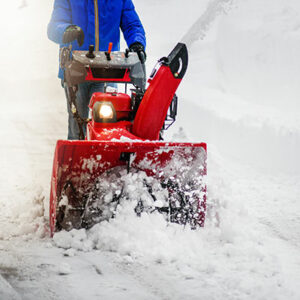 Besides avoiding the potentially deadly health risks posed by shoveling snow yourself, there are many other benefits to hiring a professional for the task. While you might only have access to a basic snow shovel, professional snow removers have all of the latest equipment and the manpower to remove snow quickly, easily, and effectively. Experts also have years of experience that make the usually labor-intensive task of snow removal take only minutes.
If you have a busy schedule, it can be difficult to find a few hours in the day to remove snow yourself. Hiring a professional allows you to enjoy all the convenience and benefits of a snow-free driveway and walkway without investing the time and labor it takes to do it yourself. Additionally, getting an expert for this chore can actually save you money in the long run. Instead of buying shovels, blowers, plows, and many bags of ice melt over the years, you can easily take care of this chore by simply hiring a professional to get the job done.
Besides avoiding the potentially deadly health risks posed by shoveling snow yourself, there are many other benefits to hiring a professional for the task. While you might only have access to a basic snow shovel, professional snow removers have all of the latest equipment and the manpower to remove snow quickly, easily, and effectively. Experts also have years of experience that make the usually labor-intensive task of snow removal take only minutes.
If you have a busy schedule, it can be difficult to find a few hours in the day to remove snow yourself. Hiring a professional allows you to enjoy all the convenience and benefits of a snow-free driveway and walkway without investing the time and labor it takes to do it yourself. Additionally, getting an expert for this chore can actually save you money in the long run. Instead of buying shovels, blowers, plows, and many bags of ice melt over the years, you can easily take care of this chore by simply hiring a professional to get the job done.
Call Showcase Lawn Works To Set Up Your Snow Removal Program
If you want to avoid all the negative health risks and the time-consuming work of shoveling snow yourself, call the professionals at Showcase Lawn Works of Pennsylvania. We have a dependable Snow Removal Program that will make sure you don’t ever have to worry about removing snow from your driveway or sidewalks ever again. We also offer a variety of other services throughout the year, including lawn care, tree and shrub care, perimeter pest control, and landscaping. You can visit our website to view all of our services and request a free estimate, reach out to our staff via our contact form for more information, or give us a call at 717-354-3226 or call toll-free at 800-503-3426. For more informative articles on lawn and garden care for all seasons, be sure to check out our monthly blog! Request A Quote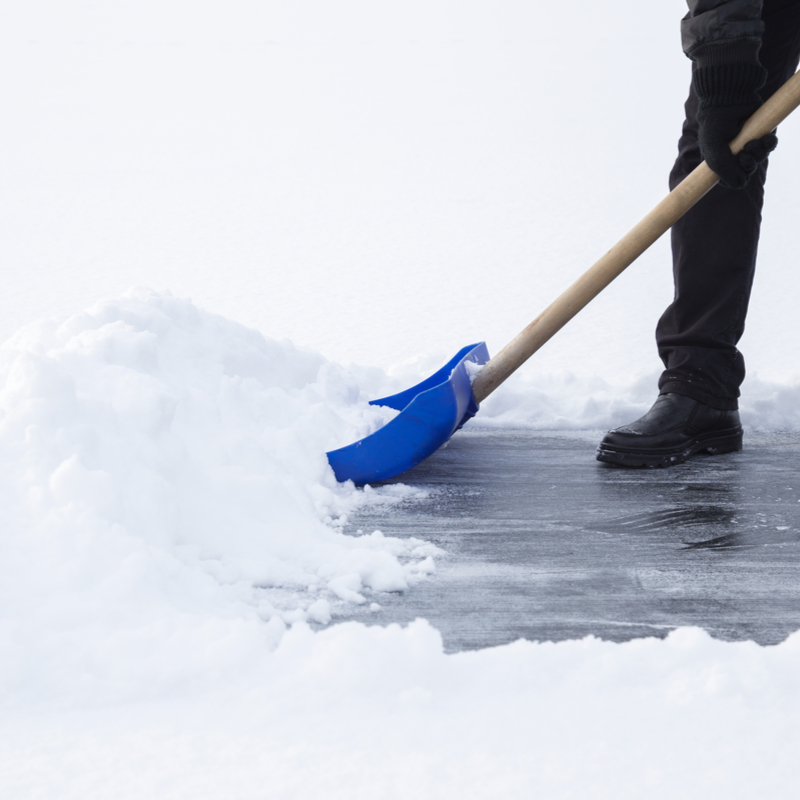
Is Aeration and Overseeding Right for Your Eastern PA Lawn?
Here in South Eastern PA, summer can be rough on our landscapes. With our fluctuating temperatures and unpredictable weather patterns, both summer heat and excessive flooding can damage our lawns. Add to that the playtime, lawn equipment, and vehicles we often drive on our grounds; this can all take a significant toll on our grass. Many times these stressors can compact our soil and produce excessive thatch. Fortunately, there is a solution. Lawn aeration is a service that will help to revitalize your lawn. Read on and learn everything there is to know about compacted soil, aeration, and a process called overseeding that can also increase the health of your lawn.What Is Compacted Soil?
- Spongy grass
- Water runs off or pools in areas of your yard.
- Bare or patchy areas of grass
- Stunted growth of plants
- Hard soil
What Is Thatch?
Thatch is an intermingled blend of organic material that gathers between the soil and the grass. As it builds up, it too prevents essential elements such as water, air, and nutrients from penetrating your soil. When these elements are unable to get to your roots, your grass will begin to weaken, wither and eventually die. Soil compaction and thatch are two of the biggest lawn problems that residences and businesses in Eastern Pennsylvania face.Aeration to the Rescue
A process called lawn aeration can help relieve your grass of soil compaction and excessive thatch. It is the process of removing plugs of soil from your grass, depositing them on top, and distributing them across your lawn.Additional Benefits of Lawn Aeration Include:
- Reduces compacted soil: Cores of compacted soil are pulled from the lawn, allowing grassroots to spread out and grow deeper.
- Reduces excess thatch: Aeration relieves your lawn of excess thatch, allowing your grass easy access to air, water, and nutrients.
- Access to water, air, and nutrients: Relieving soil compaction and reducing thatch build-up enables your grass to have easier access to air, water, and fertilizer.
- Stronger root system: With less soil compaction, your grassroots will have more space to spread out. This results in deeper root systems and healthier grass.
When Is the Best Time To Aerate Your Lawn?
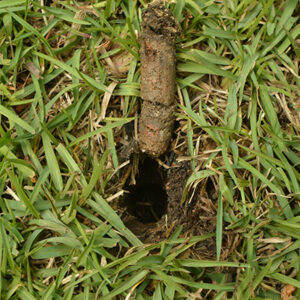 Able to be performed annually, lawn aeration should only ever be performed during the growing season. Here in Pennsylvania, most of our lawns are made of cool-season grasses such as tall fescue, Kentucky bluegrass, and ryegrass. The growing season for cool-season grasses is in the spring and fall. Having aeration performed now in the fall will help to strengthen your roots and prepare them for our upcoming frigid winters.
Able to be performed annually, lawn aeration should only ever be performed during the growing season. Here in Pennsylvania, most of our lawns are made of cool-season grasses such as tall fescue, Kentucky bluegrass, and ryegrass. The growing season for cool-season grasses is in the spring and fall. Having aeration performed now in the fall will help to strengthen your roots and prepare them for our upcoming frigid winters.
Overseeding Your Eastern PA Lawn
Typically done after aeration, overseeding is the application of new grass seeds onto your existing yard. Usually, it is a mix of different strains of grass. Adding in a variety of grasses can help increase your turf's resistance to lawn pests, drought, and lawn disease. Overseeding can also quickly thicken up your lawn and fill in bare spots.How to Prepare Your Lawn Before Aeration and Overseeding Services
Fall is the best time for lawn aeration, but it’s essential to prepare your lawn for the service. Make sure to mark any areas near electric dog fences and mark your sprinkler heads as well. This helps your lawn care technicians navigate your lawn safely, without causing any accidental damage. It’s also a good idea to make sure the soil is moist before your aeration service. Watering your grass a couple of days before the service will ensure the tines from the aerator can easily penetrate the soil.Contact the Professionals at Showcase Lawn Works for Professional Aeration and Overseeding Services Now
Revitalize your lawn with Showcase Lawn Work's aeration service. Or combine it with our overseeding service and bolster the strength of your grass, making it less prone to pest infestations, disease, and weeds. Learn more about our aeration and overseeding services by reaching out to us online or calling us at 717-354-3226. Invest in our year-round lawn care program now and start giving your turf the care and nutrients it needs when it needs them. Discover more tips and ideas through our monthly blog articles. Then check us out on social media and like us on Facebook. We can't wait to work with you. Request A Quote